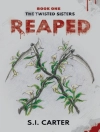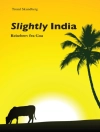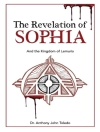MOLA (formerly Northamptonshire Archaeology) undertook archaeological excavations at Stanground South between September 2007 and November 2009 on behalf of Persimmon Homes (East Midlands) Ltd and in accordance with a programme of works designed and overseen by Cg Ms Heritage. The site is situated on the south-eastern outskirts of Peterborough, on glacial tills overlooking along the Fen edge. The works comprised five areas of set-piece excavation and a series of strip map and record areas, targeted on areas of archaeological potential identified by previous evaluation works. In total, an area of 70ha was subject to archaeological mitigation. The excavations recorded archaeological remains dating from the Bronze Age to the medieval period. The earliest features comprised four burnt mounds dating to the early Bronze Age, one of which was associated with two superimposed buildings and a small group of up to six cremations. In the middle Bronze Age there was a substantial unenclosed cemetery (urnfield) comprising 78 cremations (as well as a further possible three outlying cremations to the urnfield). In the late Bronze Age/early Iron Age a substantial droveway, up to 65m wide, was constructed leading northwards from the Fen edge to higher ground. A series of post-built roundhouses were later constructed within the confines of the droveway. In the middle Iron Age, the droveway was partitioned to form a series of enclosures, within one of which a settlement was established adjacent to the Fen edge. This included roundhouses and a number of two-post and four-post structures. In the later Iron Age, an enclosed settlement had developed to the north-west. This comprised several roundhouses within a substantial rectangular enclosure, which was open at its southern end. It appears that this began as an unenclosed site, which was later enclosed. Removal of cattle horn for working may have been occurring. In the Roman period (2nd and late 4th centuries AD) a series of small enclosures were constructed on the eastern side of the later Iron Age enclosed settlement. These contained structures and features apparently associated with rural industry, which may have also exported surplus to market. Industries including the processing of hide, late Roman cheese making (with seven presses recovered), late Roman pottery production and some metalworking. The economy of the site from the later Bronze Age onwards was focussed on pastoralism, with limited evidence for grain cultivation. During the Roman period, this seems to have specialised further towards dairy farming. The environment of the site seems to have undergone little change from the later Bronze Age, being largely open with areas of woodland and wetter areas. Peat growth during the Iron Age resulted in the covering of some of the Bronze Age features. During the medieval period, large portions of the site were given over to open field cultivation, evidenced by the remains of ridge and furrow cultivation. The area was partitioned in the post-medieval period by the construction of a series of drainage ditches, which form the basis of the current field pattern.
William A Boismier & Edmund Taylor
Excavations at Stanground South, Peterborough [PDF ebook]
Prehistoric, Roman and Post-Medieval Settlement along the Margins of the Fens
Excavations at Stanground South, Peterborough [PDF ebook]
Prehistoric, Roman and Post-Medieval Settlement along the Margins of the Fens
Acquista questo ebook e ricevine 1 in più GRATIS!
Lingua Inglese ● Formato PDF ● Pagine 314 ● ISBN 9781789698459 ● Casa editrice Archaeopress Publishing Ltd ● Pubblicato 2021 ● Scaricabile 3 volte ● Moneta EUR ● ID 8077355 ● Protezione dalla copia Adobe DRM
Richiede un lettore di ebook compatibile con DRM












